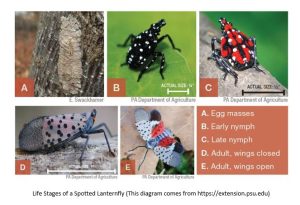Tree Care and Resources
Tree Planting Programs for Private Properties
The City of Takoma Park offers discounted tree plantings for private property for the Spring and Fall planting seasons. Orders are currently not being accepted but please check back towards the end of the summer to hear about tree planting opportunities
Trees offer numerous benefits to your property and the public at-large, including cooling the city, intercepting stormwater, supporting a robust local ecology, and providing beauty to our urban landscape. With a changing climate and increasing environmental stressors challenging our mature tree populations, planting new young trees is more important than ever. You can be a part of this important cause by having a tree planted in your yard and we are here to help you make that happen.
We look forward to working with you to restore the urban forest canopy of Takoma Park and beautify your yard!
——————————————————————
Informational Links and Presentations
Nov 4, 2019 – Tree Workshop -Recorded Presentation:
– Beetles, Borers & What You Can Do
Bartlett Tree Experts, by Dr. Kevin Chase, PhD, Entomologist
– Factors of Oak Decline (White Paper)
University of MD Extension Home & Garden Information Center
– Why are so many Oak trees dying this year?
University of MD Extension Home & Garden Information Center
– Water Tips During A Drought
Contact Information:
Urban Forest Manager
Email: urbanforestmanager@takomaparkmd.gov
Phone: 301-891-7612
Bulletin: Draft Urban Forest Master Plan
The Urban Forest Manager has published the Draft Urban Forest Master Plan for public comment. You can see the video of the 6/15/22 City Council Meeting in which the draft plan was presented to the City Council by clicking the following link: Click Here
You can view and download the PDF copy of the Draft Urban Forest Master Plan by clicking the following link: Click Here
Please provide comments by email to UrbanForestManager@TakomaParkMD.gov by 7/17/22
————————————————————————————-
Spotlight: The Spotted Lanternfly
Overview:
The spotted lanternfly is an insect pest that recently arrived in Maryland. It sucks sap from trees and can weaken them but rarely kills them. It is of most concern to tree-of-heaven (Ailanthus altissima), grapes, and nursery and orchard trees. Tree-of-heaven itself is an invasive tree species. The Takoma Park Urban Forest Manager has not yet confirmed a sighting of the spotted lanternfly in the City but it has been sighted in Montgomery County, which is currently designated as part of the quarantine zone. See the resources linked below for additional information.
What should residents do?:
- Maintain the health of your trees so they can cope with any stress caused by potential spotted lanternfly feeding. This includes mulching the soil tree roots are growing in, maintaining appropriate soil fertility, and watering during dry times.
- Check vehicles and outdoor items for spotted lanternfly egg masses, nymphs, and adults before moving them out of the quarantine zone.
- Report any sightings of the spotted lanternfly to the Urban Forest Manager and to the Maryland Department of Agriculture via the link below.
- Don’t panic. The current thinking is that we are unlikely to see much impact to our landscape and forest trees from this insect so extraordinary measures are unlikely to be warranted.
Further Details:
Spotted lanternfly (Lycorma delicatula) is native to China. In 2006, this planthopper spread to South Korea and then in 2014 to Pennsylvania. Since then there have been confirmed sightings in New Jersey, Delaware, Maryland and Virginia. Its favorite host is Ailanthus altissima, the Tree-of-heaven, also native to China but is known to feed on a wide variety of plants. The current understanding is that the insect is of most concern to tree-of-heaven, grapes, and potentially nursery and orchard trees. It seems likely that the health impacts to most other species will be minor. However, we must remain vigilant and adapt as new information emerges.
The insect damages these plants in two different ways:
- The nymphs and adults use their piercing mouthparts to feed off the fluid from the stems or leaves. This causes reduced yield, stunted growth, localized damage and in some cases, death.
- A secondary concern is the sugary secretion the Spotted Lanternfly makes while feeding. This substance is called honeydew and attracts ants, wasps and other insects and is readily colonized by mold. The mold then causes parts of the plant to blacken, which reduces photosynthesis and may be unattractive.
For current information please refer to the following links:
- Up-to-date information about the quarantine: Spotted Lanternfly by the Maryland Department of Agriculture
- General information: Spotted Lanternfly Management for Residents by University of Maryland
- To report a sighting: Report a Spotted Lanternfly Sighting in Maryland
————————————————————————————-
Quick Links
- Contact Us
- Curbside Collection Services
- Fight the Bite
- Snow Removal
- Stormwater Management Program
- Traffic Calming Regulations
- Tree Care and Resources
- Utility Contact Information
- Vegetation Maintenance
Visit our webpages for additional resources on Tree Care:
The following links are a helpful resource in selecting tree species:
- Native Plants for Wildlife Habitat and Conservation Landscaping
- Takoma Park Approved Tree Species List
Other Resources:
The City offers assistance for tree removal of dead or hazardous trees for low- and moderate-income residents (85% of the median income for Montgomery County). The Emergency Tree Fund Criteria and Homeowners Application can be found here:

